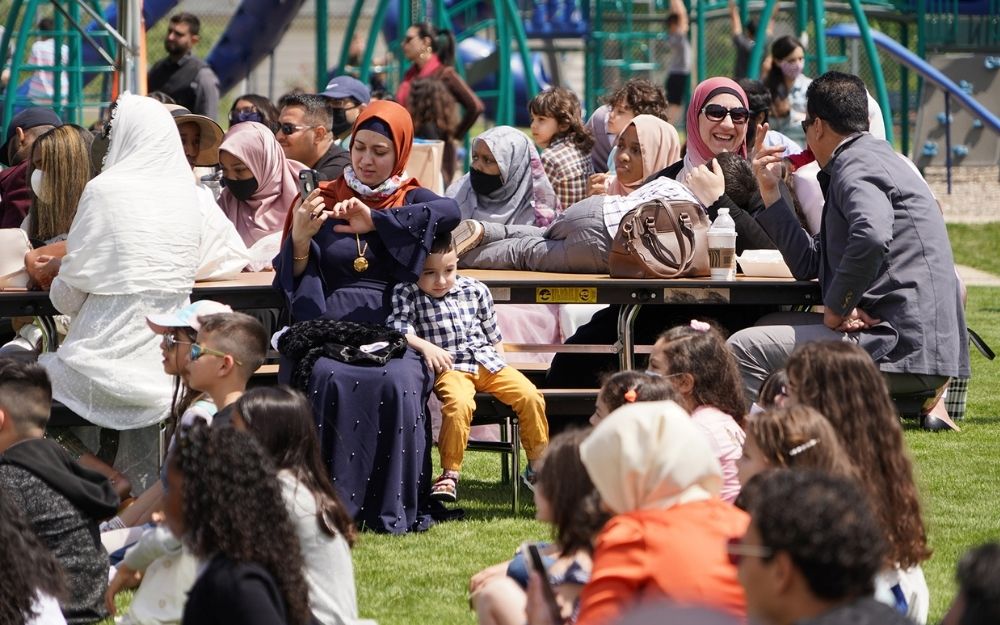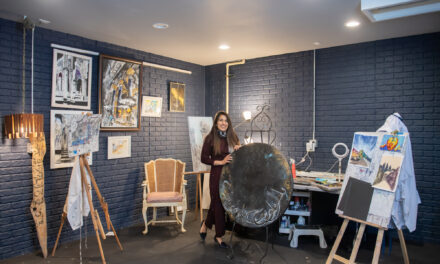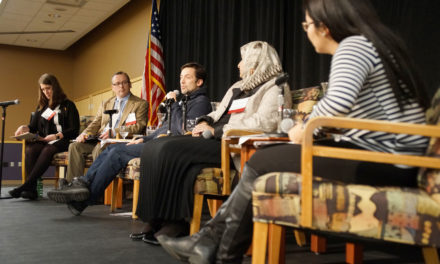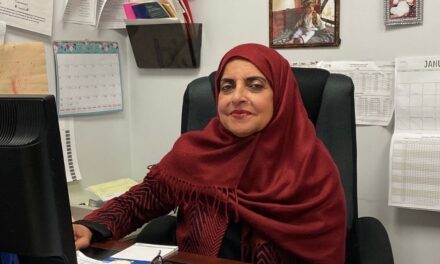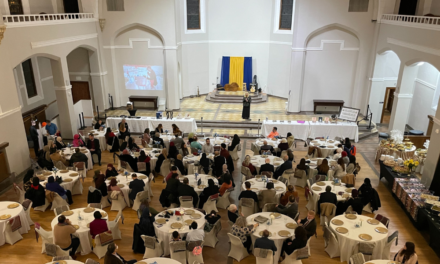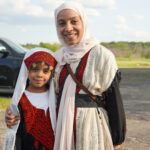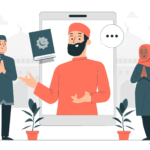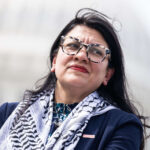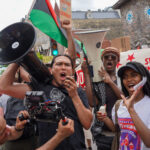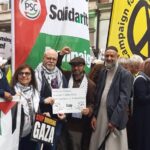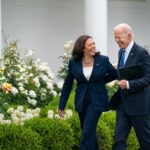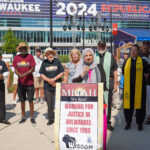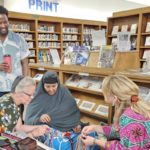Milwaukee Muslim Women’s Coalition’s Eid ul Fitr festival at the Islamic Society of Milwaukee in May 2021 attracted Muslim’s from across Greater Milwaukee. Photo credit: Lee Matz
One of the fastest growing yet least studied populations in Milwaukee are its Muslims, say a team of researchers who are collaborating with local Muslims to fill this knowledge gap.
The Milwaukee Muslim Project, a long-term research project at the University of Wisconsin – Milwaukee, aims to further understanding of the Muslim community in the Milwaukee area, to challenge Islamophobia and to build networks among scholars, artists and community leaders who share these goals, according to UWM’s Center for 21st Century Studies, which provides some of the support for the project.
The project’s interdisciplinary team of scholars discussed their research this month in UWM’s “Asia in Conversation Series,” informal conversations between UWM faculty and participants from beyond academia about research and creative work related to Asia. The team shared findings from over a decade of research on Milwaukee’s Muslims.
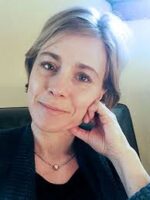
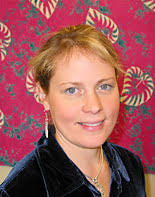
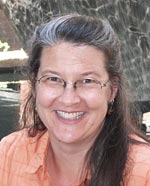
From left to right: UWM faculty members Anna Mansson McGinty, associate professor of geography and women’s and gender studies; Caroline Seymour-Jorn, professor of comparative literature; and Kristin Sziarto, associate professor of geography.
In the Feb. 12 conversation, “Dialogue on Engaging Muslim Communities in Research,” Janan Najeeb, Milwaukee Muslim Women’s Coalition president and executive director of the Islamic Resource Center, joined UWM faculty members Anna Mansson McGinty, associate professor of geography and women’s and gender studies; Caroline Seymour-Jorn, professor of comparative literature; and Kristin Sziarto, associate professor of geography, to discuss the Milwaukee Muslim Project’s history, methods and findings.
Milwaukee Muslims need more information
Demographic information about Muslims has been hard to find. The U.S. census does not ask about religion. At the same time, there is not an ethnic category on the census that captures Muslims, who are multi-ethnic, including Middle Eastern, North African, African American and South Asia, among others.
Members of Milwaukee Islamic Da’wah Center approached the head of UWM’s geography department in 2010 to ask if it could do a demographic study of Milwaukee’s Muslim community. They wanted information in order to better serve their community, Professor Seymour-Jorn said. The Dawah Center, 5135 N Teutonia Ave, on Milwaukee’s northwest side, is one of the main Muslim organizations in the city, she added.
“The leadership of the Dawah Center wanted to know not only the numbers but where their community lived. Were they serving their community in terms of locations of mosques? Were Muslims getting adequate health care, especially more sensitive groups like older adults and people who don’t speak English or may have transportation problems?”
Researching Milwaukee’s Muslim community
Over the past decade, the Milwaukee Muslim Project has conducted two surveys, a household survey in 2011 and an individual survey in 2013, as well as interviews with Muslim community leaders and a series of focus groups with Milwaukee Muslim youth. The findings of this research have been published in four academic papers.
With funding from a UWM grant, the three UWM scholars worked with Milwaukee Muslim leaders to design and implement its first demographic survey of the Muslim community in the city, a household survey in 2011.
They collaborated with Islamic Society of Milwaukee, the largest Islamic organization in Wisconsin, the Milwaukee Shura Council, Dawah Center and Milwaukee Muslim Women’s Coalition to develop and distribute household surveys, which aimed to gather demographic data from Milwaukee Muslim head of households.
Only 695 household surveys were completed, so it provided an “undercount” of the number of Muslims in Milwaukee, Seymour-Jorn said. “We know the population of Muslims in Milwaukee is much bigger than it indicated. However, we did learn about the features of the population.” Among them, Milwaukee’s Muslim community is “very diverse,” she said.
Dr. Sziarto highlighted data that showed just how diverse Milwaukee’s Muslim community is. Findings about the “main language spoken in the household” showed:
- 40% English
- 32% Arabic
- 14% Urdu
- Other languages include: Turkish, Somali, Punjabi, Burmese, Pashto, Albanian, Bengali, French, Hindi, three West African languages and others.
The 2013 individual surveys also focused on demographics, aimed to capture a broader swath of the community and added questions about experiences of discrimination. It aimed to help clarify the impact of Islamophobia on Milwaukee’s Muslim community. A series of focus groups with Muslim youth followed. They also asked about experiences with discrimination, among other things.
“One thing that came up in the individual surveys in which we were asking where people felt comfortable and a sense of belonging (verses where they felt threatened by Islamophobia), many who responded said they did feel comfortable in their neighborhoods,” Sziarto said. On the other hand, they felt most uncomfortable in the airport (for obvious reasons). “Students also said university spaces were places on ‘the more comfortable side.’”
Another thing “we learned from the surveys is that this is certainly a very highly educated community and a community that very much supports education,” Seymour-Jorn added.
Interviewing Muslim community leaders
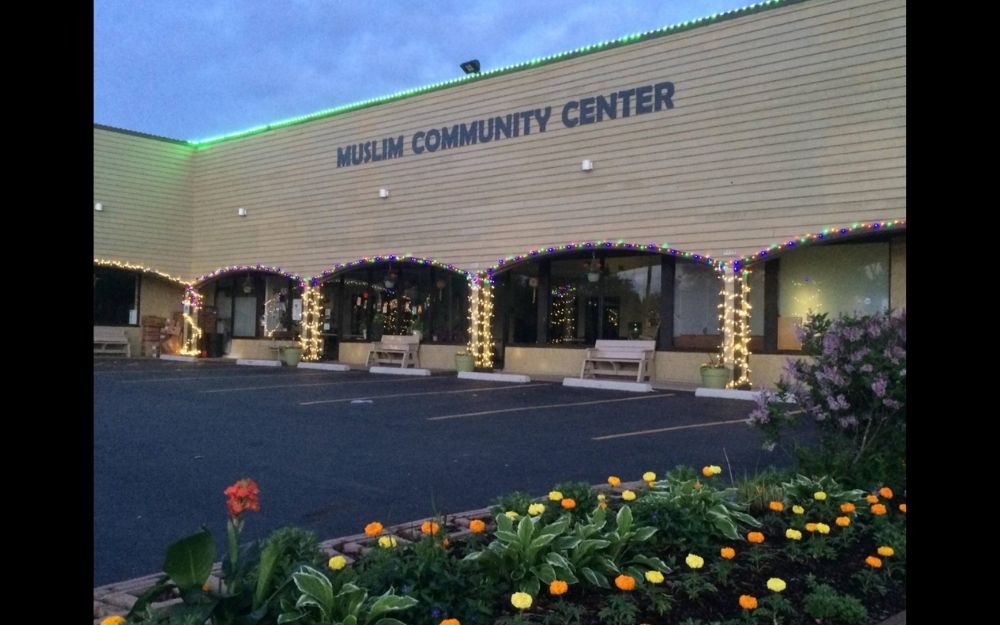
The Milwaukee Islamic Dawah Center, 2110 W Hampton Ave, Milwaukee, prompted the Milwaukee Muslim Project by asking the University of Wisconsin – Milwaukee’s geography department for demographic information about Milwaukee’s Muslims.
During the summer of 2015, the scholars conducted in-depth interviews with eight leaders from Muslim institutions in Milwaukee, including the Dawah Center; the non-profit social justice organization, Maruf; Islamic Resource Center; Milwaukee Muslim Women’s Coalition; Muslim Community Health Center; Sultan Muhammed Mosque; Clara Muhammad School; and the Niagar Foundation/Turkish-American Society of Wisconsin.
During lengthy interviews, Muslim community leaders answered questions about the mission and role of the organizations, initiatives pertaining to immigration issues, health rights, social justice, environment and civil rights, as well as leaders’ understanding of dawah (the practice of conveying the message of Islam to non-Muslims) in the 21st century United States, a 2013 research article summarized.
“We learned that social justice activism is important to Muslim leaders,” Seymour-Jorn said. That activism has been inspired by American civil rights activism, Islamic activism and issues particular to Milwaukee, such as being a very racially segregated city, she added.
Engaging with Muslim artists
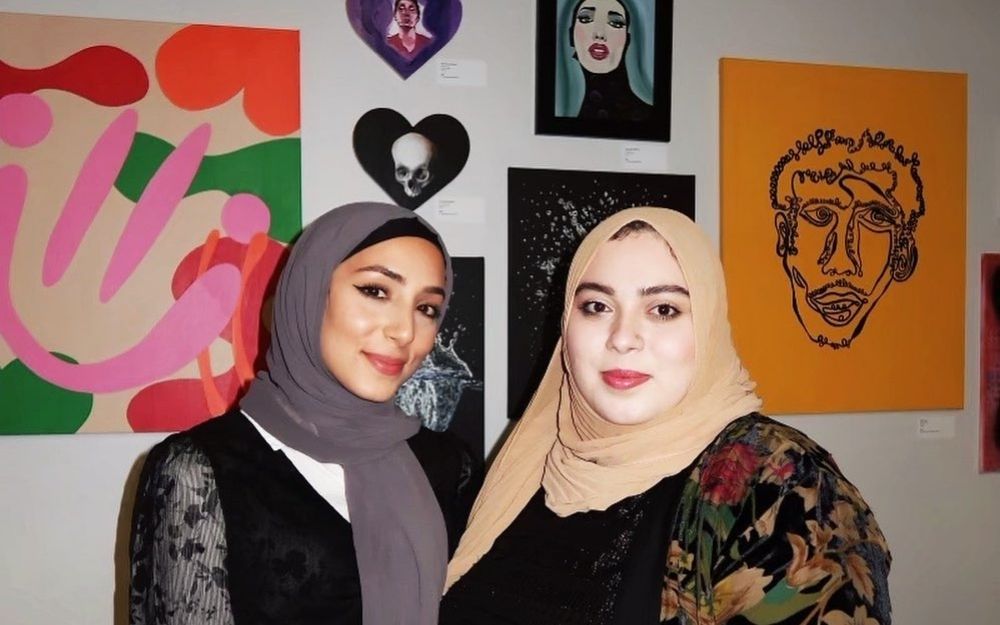
Fanana Banana founders Amal Azzam and Nayfa Naji at a gallery event in November 2021. The artists are collaborating with the Milwaukee Muslim Project to explore how Muslim artists express their identity and concerns through their work.
The project continues this year, interviewing Muslim artists, poets and other creatives to understand “how Muslims express ideas, concerns and aspects of their identities through artistic means,” Seymour-Jorn said.
The scholars are working with two young Milwaukee Muslim women artists and founders of Fanana Banana, Amal Azzam and Nayfa Naji, to encourage conversations between campus and community members about art and belonging in Milwaukee. Fanana Banana (fanana meaning “female artist” in Arabic) is a Muslim artist and creative collective.
Where to go next
What has been done so far is “incredibly beneficial” because there was no information available before, Najeeb said. “It was an exciting opportunity to give us information about the number of immigrants versus second and third generation, the number of children. Do we need to expand the school? How many participate in Islamic schools versus other schools? Where are most Muslims living?”
However, the limitations of this initial work are clear, she added. “We were dealing with a community that already felt they were under a microscope. There was a lot of hesitancy about how this information would be used. A big part of what we had to do was a PR effort to our community to convince them that this project would be beneficial.”
Najeeb also pointed out that parts of the Muslim community were missed. First, those who don’t speak English were not likely to complete the survey, she said. Second, the surveys were distributed through mosques and community centers. “There are some Muslims who are not part of the mosque communities, like some Iranian and Latino Muslims. How do we make sure they are also represented?”
